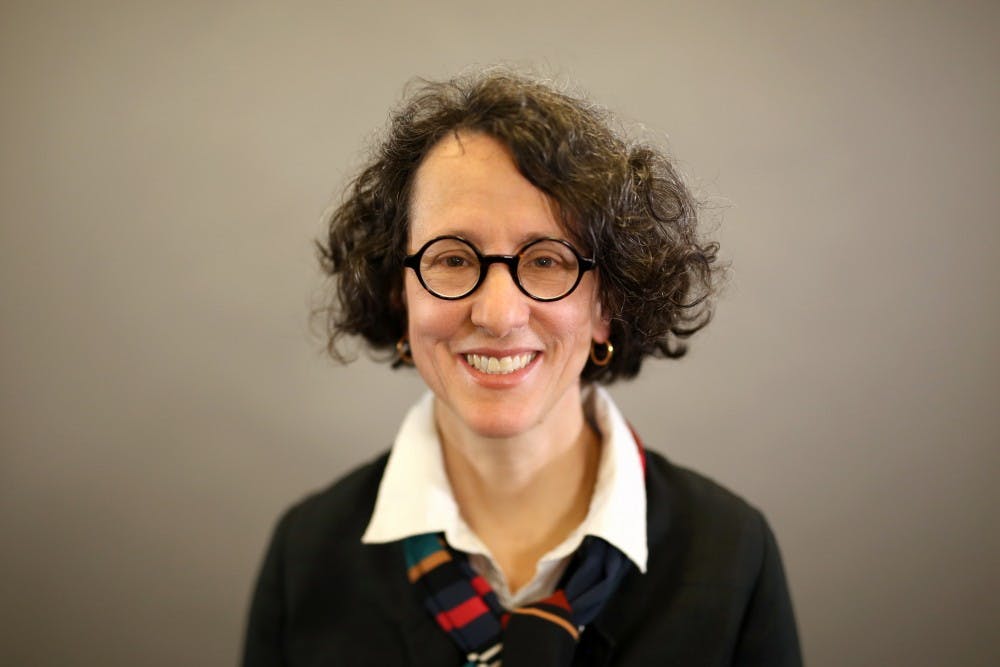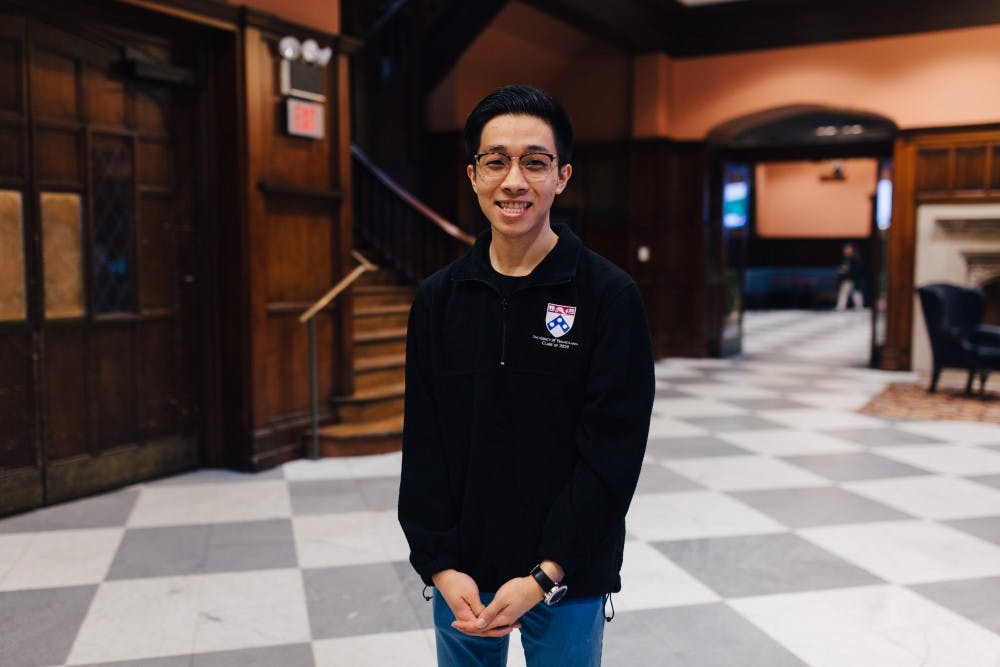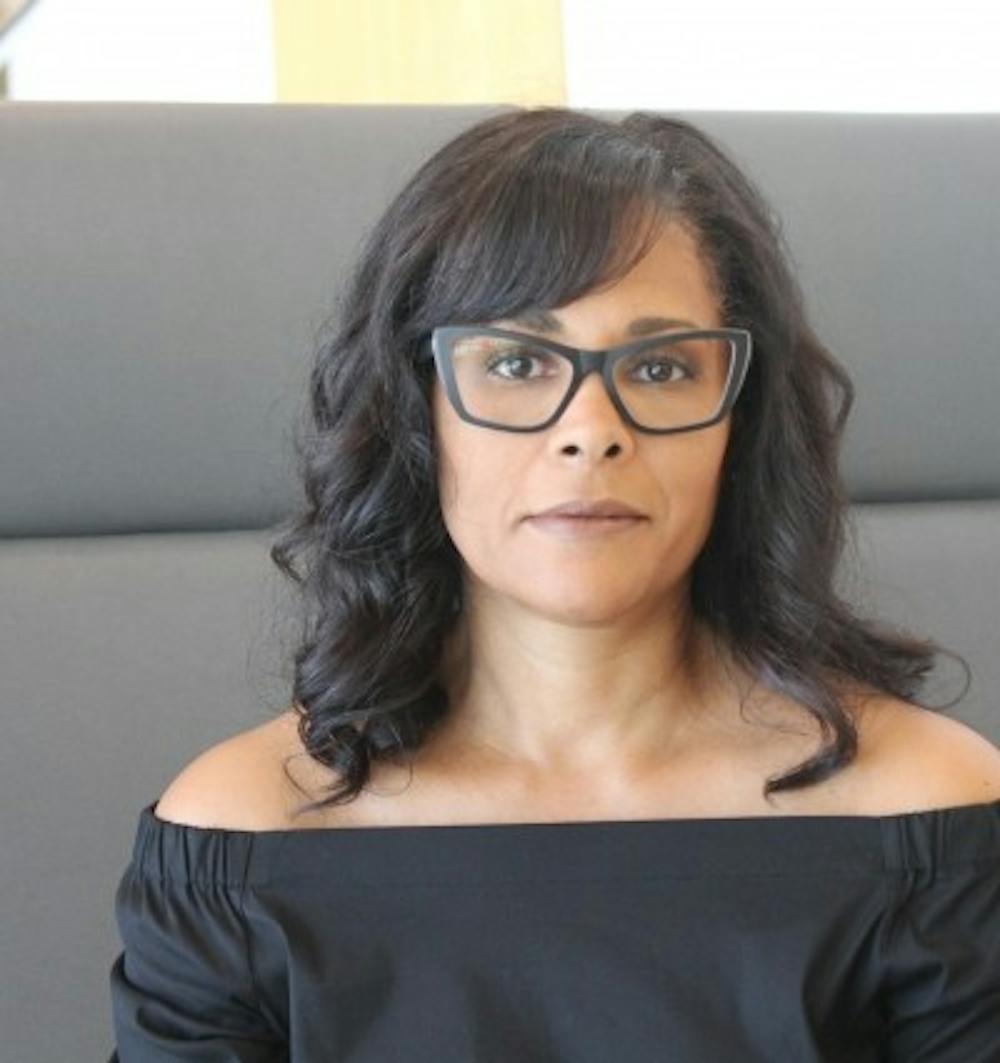In one of the first classes that history professor Ann Farnsworth–Alvear taught at Penn, the sheer range of experiences of the students packed into her lecture on Latin America was both remarkable and invisible, depending on who you asked.
Farnsworth–Alvear, the former director of Latin American and Latino Studies (LALS), recounts these early days, saying, “There was a kid whose father was a general in the Argentine military—very right wing, as this was a country just coming out of a military dictatorship. He was sitting next to a Puerto Rican kid from New York who understood his own intellectual motivations in terms of a left–wing project of Puerto Rican liberation. And they were next to somebody from Kansas who just saw both of them as Spanish speakers!”
Farnsworth–Alvear’s LALS classes have brought together students not only to learn about regional cultures and societies, but also to tackle complex issues of race, ethnicity, and identity. Regardless of their backgrounds or whether they identify as Latinx at all, she explains that “people approach [ethnic studies] from many different standpoints.”
Sociology, education, and Africana studies professor Camille Z. Charles, also the undergraduate chair for the Department of Africana Studies, describes how ethnic studies broadens people’s understandings of different communities and histories. Students might be members of the group they’re studying, or they might not be members and want to dispel preconceived notions.
“Just because I interpret a historical event in this way doesn’t mean my way is the only—or best—way,” she says, emphasizing how it’s important to be aware of alternate perspectives.

For many members of the Penn community, ethnic studies classes hold massive importance. The current state of ethnic studies on campus is nowhere as contentious as it has been in the past. But recent events that have threatened or modified the field—like the 2017 struggle to preserve the Asian American Studies (ASAM) program or the 2015 merge of the African Studies department with the Center for Africana Studies—loom large. In light of ethnic studies’ fraught history at Penn and in America, students and faculty alike want to see Penn further legitimize and support the field.
Ethnic studies wasn’t even considered an area of academic focus until 1968, when the Third World Liberation Front, a coalition of students of color at San Francisco State University and UC Berkeley, conducted a five–month strike demanding comprehensive multicultural reform in curricula they saw as almost exclusively delivered by and for white men.
In addition to stressing the recruitment of students and professors of color, their efforts achieved the creation of the first ethnic studies programs and departments in the country. It was a discipline which would soon come to Penn, when the Afro–American Studies Program was founded in 1971.
It’s important to recognize the difference between area studies and ethnic studies. Ethnic studies is a broad field of study, which at Penn includes Asian American Studies, Latin American and Latino Studies, Africana Studies, and Native American and Indigenous Studies. It focuses on those considered minorities in American society, although it often extends its focus beyond American borders as well.
On the other hand, area studies, like East Asian Studies or Modern Middle Eastern Studies, stems from the Cold War era when many regions decolonized, according to Farnsworth–Alvear. Although it includes the study of culture, it tends to analyze particular geographic regions with an increased interest in strategy, development, and economics. Area studies in the US was established by already–institutionalized university scholars in order to focus on—and, some say, uphold—US–Third World relations.
In particular, ethnic studies classes give students of color ways to learn more about their own communities’ histories, an opportunity many find was not afforded to them before Penn. Jessica Li (C ’20), a co–chair of the ASAM Undergraduate Advisory Board (UAB) and current Daily Pennsylvanian opinion columnist, grew up in a predominantly white neighborhood and entered Penn certain she wanted to know more about her Asian American heritage.
“I think we all came from high schools with very white history classes. I had never really learned anything about marginalized people—the first class that I took on that was 'Introduction to Asian American History,'” she says. “You’re learning about the history of people who haven’t been spoken about.”
Louis Lin (C ’20), also a co–chair, nods at Jessica’s response and adds on, cutting through the murmur of the coffee shop. “Coming to Penn and seeing that there was a field of Asian American studies that I didn’t even know existed before… gave me the impetus to find the language to describe [the Asian American experience].”
He zeroes in on the class ‘Asian American Activism and Organizing’ as a pivotal moment. “It was kind of an outlet to see people who looked like me in different fields, who kind of did the things that I want to do in the future.”
Ethnic studies at Penn has found itself in precarious situations time and time again. This turmoil has left many feeling powerless in the face of administrative decisions. Students were left unsure if they’d be able to complete their degrees. Faculty members worried their disciplines would fall to the wayside.
When Grace Kao, former director of ASAM, left Penn in 2017, the future of the program was left up in the air. Remaining professors were forced to take on her duties, rendering them unable to teach. Months of protests and petitions followed because of the administration’s perceived lack of interest, funding, and support for the program.
“It was very depressing. We’re a program… programs have very limited power and means in the university,” English professor and ASAM director Josephine Park sighs. “No one knew a way forward. Grace Kao was the first hire in the initiative to create an Asian American Studies program. She was foundational—there was a gaping hole in our curriculum.”
After more than a year without a director, Park was appointed the interim, and now the full–time, director of ASAM. A full–time lecturer, Rupa Pillai, was also hired.
Park acknowledges that the program is in a better place than before, “but it’s not on a growth trajectory,” she says.

The ASAM UAB continues to hold annual meetings with School of Arts and Sciences Dean Steven Fluharty and College of Arts and Sciences Dean Paul Sniegowski, as well as Penn Provost Wendell Pritchett. Despite some small successes—like moving out of a one–room office—Louis and Jessica are disappointed by the administration’s complacency.
“They seem very satisfied—they’re like ‘we hired a chair, and we hired faculty.’” Jessica says. To her, the main problem is achieving legitimacy in the eyes of the Penn administration. “We are a program, but we’re not at the same level as say, Urban Studies,” which is also a program. “They don’t really recognize ASAM as its own discipline.”
One of the main issues ethnic studies still faces is the need for more faculty. “We don’t have the manpower to teach the classes that we want to see happen,” Jessica says. Existing classes are mostly cross–listed and taught by faculty not primarily dedicated to ASAM.
The pivotal class Louis took on Asian American activism, typically taught every fall, has only been taught once in at least three semesters. Park splits her time between ASAM and her duties as the undergraduate chair for the Department of English.
ASAM hasn’t been the only ethnic studies discipline to face some type of upheaval recently. In 2015, protests and discontent followed after the Africa Center was closed and the Center, along with the African Studies program, was merged into the Department of Africana Studies.
Many felt this decision marginalized African Studies, which promotes the direct study of the African continent—and by extension, African students. They also felt that the decision indicated that African Studies was the same as Africana Studies, which specifically includes the study of the African diaspora.
While School of Arts and Sciences Dean Fluharty asserted that federal funding being cut was the reason for the merging, those affected remained skeptical of Penn’s priorities.
“Africana studies has always included African studies,” Charles qualifies. But it was “quite difficult for some faculty members, because of the unique context of merging the African and African diasporic experiences.”
Because scholars can specialize in populations with extremely distinctive histories—from African Americans, to Afro–Latinxs, to continental Africans, and more—it’s often previously justified separate resources. The 2015 decision blindsided those it affected. It also signaled, to many involved in the discipline, an institutional neglect of African Studies and ethnic studies as a whole.
Charles says that Africana Studies has now stabilized and even expanded. But the events bring up an important tension between Penn’s allocation of resources and the courses students want to see offered.

Louis adds his perspective, as if he’d been holding it in the entire interview. “There’s a catch–22, where [the administration] pushes back on funding, saying that ‘You don’t have enough students taking your courses.’ But if we don’t offer the courses for students to be taking, how can we show we have students interested in courses?”
Even the few courses offered by programs like ASAM are immensely popular. "Introduction to Asian American History" is one of the largest History classes the school offers. The largest English class at Penn is "Asian American Literature." “So you can’t tell us that people aren’t interested.”
“If it’s an issue with the university literally not having enough funding, which I think that they do”—Louis mutters the last couple of words under his breath—“then that’s understandable. But if you’re saying that we don’t have enough students interested, we actually do, so you should fund us,” he concludes.
LALS is somewhat of an anomaly in that it straddles the line between ethnic and area studies. The department has been afforded a certain degree of legitimacy at Penn. With a major and minor, the program is growing and thriving, Farnsworth–Alvear says.
Founded in 1988 as the Latin American Cultures program, LALS has always explicitly included the study of Latinx communities in the US and strongly emphasized culture, as opposed to its strictly area studies counterparts.
Now, LALS increasingly studies Latin America as a region, as area studies would, and Farnsworth–Alvear describes the program’s mission as “the study of culture–areas.” This broadened mission statement has given LALS more ground to stand on. “You have a wider pool of faculty to help the program… They have more wherewithal than a program that is focusing on minority populations in the US,” she says.
Early on in LALS’ history, there was much discussion about whether the program should split in two. Some envisioned one program for Latin American studies, researching populations across the Americas that speak Romance languages, and one for Latino studies, researching populations within the US with ties to Latin America.
Farnsworth–Alvear explains how, unlike the controversy that came with merging African Studies and Africana Studies, the model of a joined program is the only workable model for LALS due to the unique “transnational vision of their identity” often held by Latinx populations in the US. LALS has also faced issues, such as its need for more faculty, but its merged status and focus on both geography and culture, among other factors, have stabilized the program.
The question at hand for ethnic studies at Penn is how exactly to gain legitimacy. There’s debate on if ethnic studies driving for more acceptance within academia will lead the field away from its original activist ideals, de–emphasizing race and racism to make it palatable to a wider audience.
At many universities, including Penn, most ethnic studies disciplines are relegated to programs. They stand in contrast to departments, which hire their own faculty and control their own budgets. Most interviewed seem to agree that it’s currently unfeasible to transform these programs into full–fledged departments, given their fragile state. It’d take years, more resources, and require the University to hire a full standing body of faculty. Other options, like hiring postdoctoral fellows, are more easily achievable. Regardless, everyone agrees that ethnic studies needs more support.
People involved with ethnic studies think that, Penn, as a predominantly white institution, needs to do more for diversity and inclusion in academia.
“As long as the system of racial dynamics exists in the world,” Charles says, “everybody could do more.”

Photo courtesy of Camille Z. Charles
In addition to promoting the cultural resource centers, Farnsworth–Alvear wants to see a more sophisticated hiring approach if Penn is trying to increase faculty diversity, with a special eye on the complex issues hiring “Latino” faculty can bring.
Being “Latino” is an ethnic, not a racial, identity—hires might be anyone from a white Latino to someone of Afro–Colombian descent, she mentions. “I’d never endorse any kind of restrictions on what sort of person diversifies the institution. But if it’s an anti–racist project, Penn needs to pay attention to what kind of work is being done with different kinds of hierarchies.”
But Penn professors only have so much influence over the student body, and they can’t influence how much students value ethnic studies in academia. “There’s a lot about the racial climate on campus that we don’t control,” says Charles.
Although many ethnic studies disciplines at Penn have faced a lack of top–down support, Jessica says she’d like to see more collaboration between students involved in the various programs and departments to advocate for reform. Although the 2018 pan–ethnic studies conference was an important first step, Jessica hopes this will translate into long–term cooperation. “Obviously our struggles and histories are very different… but we’re under this umbrella of ethnic studies and more sustained communication would be good.”
The future of ethnic studies at Penn is uncertain, and many people involved in the departments and programs feel like it’s not an institutional priority. “It’s sad to say, but I feel like diversity has just kind of become a buzzword for people to just brush on the agenda,” says Jessica.
“I criticize this university because I love this university,” Louis says. “[Penn] does tout a lot of diversity on campus, and that’s not wrong. But it’s what we’re doing once they’re here. What needs to be more of a focus is inclusion.”
